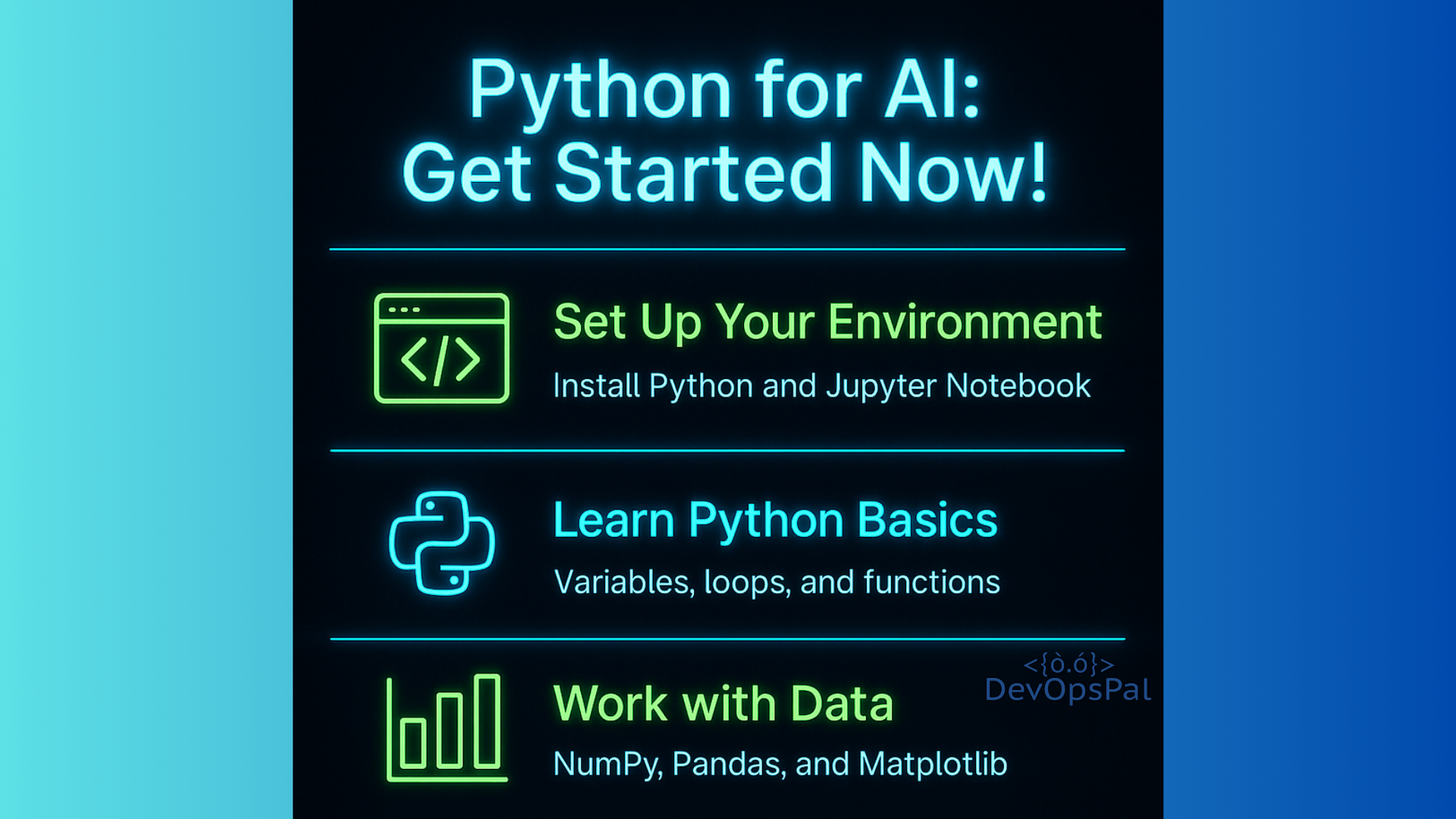Introduction:
Welcome back to the AI Learning Journey! So far, we’ve explored what AI is and the essential math behind it. Now, it’s time to get hands-on with the most popular programming language in AI: Python. Don’t worry if you’re new to coding—this post will guide you through the basics and set you up for success in your AI projects.
Why Python for AI?
Python is the go-to language for AI and machine learning because it’s:
- Easy to read and write, even for beginners.
- Supported by a huge community and tons of free resources.
- Packed with powerful libraries for data science and AI (like NumPy, Pandas, scikit-learn, TensorFlow, and PyTorch).
Getting Started with Python:
- Setting Up Your Environment
- Download and install Python.
- Use Jupyter Notebook or Google Colab for interactive coding.
- Install essential libraries:
pip install numpy pandas matplotlib- Python Basics for AI
- Variables & Data Types: Numbers, strings, lists, dictionaries.
- Control Structures: if-else statements, loops (for, while).
- Functions: How to write and use functions.
- Importing Libraries:
python import numpy as np import pandas as pd- Working with Data
- NumPy: For numerical operations and arrays.
- Pandas: For data manipulation and analysis.
- Matplotlib: For data visualization. Example: Loading and displaying a dataset with Pandas
import pandas as pd data = pd.read_csv('your_dataset.csv') print(data.head())- Your First Mini Project: Data Exploration
- Download a simple dataset (e.g., Kaggle, Iris dataset).
- Load it with Pandas.
- Use
data.describe()anddata.info()to explore. - Visualize a feature with Matplotlib:
python import matplotlib.pyplot as plt data['sepal_length'].hist() plt.show()Tips for Beginners:
- Don’t be afraid to make mistakes—coding is all about experimenting and learning.
- Use online resources like W3Schools Python Tutorial and Real Python.
- Ask questions and share your progress using #AIZeroToHero.
Conclusion:
Learning Python is your gateway to the world of AI. With these basics, you’re ready to start building and experimenting with real data. In the next post, we’ll dive into supervised learning and build your first AI model!

